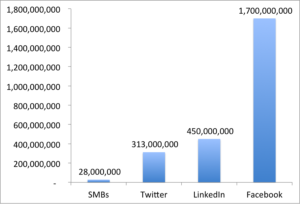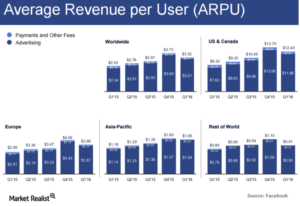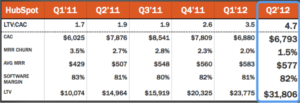


How One Startup Combines Boston’s B2B Sense with the Valley’s Social Media Style

This is a guest post by Alignable CMO Dan Slagen about the missed opportunity the company has identified in social networking, and why they’ve chosen to build the business on the East Coast. Full disclosure: NextView is an investor in Alignable.
Let me start with a few addresses:
- 1355 Market Street
- 2029 Stierlin Court
- 1 Hacker Way
Any of these ring a bell? For those of us that have been working in the startup and technology space for at least the past 10 years, these addresses mean two things.
First: They’re all based in California, and more specifically, in San Francisco, Mountain View, and Menlo Park, respectively.
Second: These addresses are some of the most exciting places to visit in tech because upon arriving, one can instantly see what true scale looks like in action.
The first address listed above is Twitter, followed by LinkedIn and Facebook. As of this writing, here are their user totals:
- Twitter: 313 million
- LinkedIn: 450 million
- Facebook: 1.7 billion
Regardless of your opinion of any of these companies, their successes or failures in going public, or the future of their businesses, they’ve all succeeded in convincing hundreds of millions of people (or even billions) to use their product.
Respect.
A Story of Impact
I remember visiting Facebook’s office in Dublin for the first time a few years ago. I left my hotel and gave my taxi driver the address. When we arrived, I looked up but didn’t “see” Facebook’s office. No logo, no sign. I was utterly confused and asked the driver if we were at the right address. He said we were and just pointed me to a glass door where I saw one woman sitting inside on a computer.
I walked in and asked if this was the Facebook EMEA HQ office, and she assured me that it was. After going through multiple levels of security, I was led upstairs, met my contact, and had my meeting. I inquired about why the building was so “hidden,” as this was surprising to me, but the answer made sense: A few months prior, a Facebook user in Europe had flown to Dublin, arrived at the office, and demanded that he be given access to his ex-girlfriend’s account because she had cut him off after the two broke up. It was an alarming day at the office, and one that illuminated sincere office security concerns.
My contact at Facebook assured me that this story wasn’t the only one of its kind, and that it was more common than you’d think in other offices they had globally.
Ponder the effect on the world that this company has had for things like to actually happen.
Facebook, Twitter, LinkedIn — and now Snapchat and a handful more — are all monumental companies with a scale and impact that most CEOs only ever read about. They’re each at the forefront of shaping people’s daily lives and routines, and they’ll be remembered as once-in-a-lifetime companies.
They’re All in California. Social Has Been a Tale of One Coast.
The city I call home, Boston, is not known for its social products. However, it’s home to some of the smartest entrepreneurs I’ve ever met, along with a long list of exceptional colleges and universities. And as an innovation economy, we put up numbers. Here is some data shared by TJ Parker, CEO of Boston-based Pillpack, as first reported by PitchBook:
Bos raised roughly same VC as NY since ’06 & ’10 w/ nearly double the exit value, ranked below in ecosystem. Got it. pic.twitter.com/LDrlNyH8mR
— TJ Parker (@tjparker) August 25, 2016
Despite that data, we don’t compete in one of the largest opportunities (in terms of sheer number of people using the product) that the startup and technology world has to offer. Why?
Truthfully, I don’t recall who said this, but I remember reading a line a while back about the difference between West Coast and East Coast startups. Essentially, someone was quoted as saying that, in Boston, we’re more focused on changing the world for good than on figuring out how to deliver pizza 15 minutes faster (funny enough, this pizza shop started in Nantucket just raised $4.5M). Fine. While inaccurate, that statement underscores our city’s focus on what some consider “unsexy” problems as compared to social, which some locally might write off as less impactful.
Looking at the pillar companies and those on deck locally, you’ll note a diversity of sector. There’s HubSpot in Cambridge and Wayfair in Back bay, which continues to impress after going public. Acquisitions are happening more and more, while companies like PillPack, Actifio, CarGurus, OnShape, Acquia, Applause, and others continue to march forward. These companies are all over the map: B2B, B2C, SaaS, ecommerce, healthcare, SMB-focused, enterprise-focused, etc.
The point is, I firmly believe there’s nothing that Boston can’t do, but there are some things Boston hasn’t decided to do … yet.
And most notably absent is building a network. A big one. One that provides everything that a big, valuable, growing network should.
At Alignable, we see this as a huge opportunity, and so we consider ourselves a Boston company trying to “pull off a California,” if you will. Let’s take a closer look at this opportunity, as well as share more details about how we’re building the business.
The Business Network Opportunity
Alignable is a network exclusively for business owners, conceptualized by Eric Groves and Venkat Krishnamurthy. Incepted in 2012, Alignable’s platform hit the market in 2014, and since then, we’ve seen hundreds of thousands of business owners in North America join.
A few stats to consider on the market opportunity in North America alone:
- 28 million SMBs in North America, with roughly 60 million employees.
- SMBs account for 54% of all US sales.
- SMBs represent 55% of jobs and 66% of all net new jobs since the 1970s.
- The number of SMBs in the US has increased 49% since 1982.
- Since 1990, big business has eliminated 4 million jobs, while SMBs added 8 million.
You may be looking at the user TAM and thinking that 28 million businesses isn’t that much, especially compared to some of the previous social networks mentioned in this article. The truth is, you’re right. Just look at the chart below.

This chart shows the current number of users on Twitter, LinkedIn, and Facebook versus the entire TAM of SMBs here in North America. Doesn’t look all that compelling. But how are networks truly measured? “Users” is interesting, but the engagement metrics and value of users is where real success comes into play.
Next, look at the average revenue per user numbers (courtesy of Piktochart) are listed below, and while this information is from 2015, it’s interesting to note the trends (Instagram projected to rise to $9 by 2020 according to Forbes).

In addition, look at Facebook’s revenue per user growth globally over the past few quarters.

In looking at the market leader, Facebook, their ARPU in the US and Canada is roughly $12.50 — well above the competing networks (one of which they own in Instagram).
In Alignable’s case, the company isn’t focused on users individually, but rather businesses, and so this is where things get interesting. What’s the ARPU of a business on a social network?
A few years ago, HubSpot released their unit economics on David Skok’s blog. Their target consists of SMBs specifically. Here’s what we learned:

I am not suggesting that Alignable’s user ARPU (which is actually ARPB, or Average Revenue Per Business) is comparable to HubSpot’s. Nor am I comparing ARPU at a network company to a SaaS company like theirs. But what I do know is that our ARPU would be somewhere between Facebook’s (1 person = 1 user) and HubSpot’s (1 SMB = 1 user). And that’s intriguing, because it hasn’t been defined yet. Sounds like a great unknown worth exploring to me.
Building Blocks: How Do You Create an SMB Network?
As I mentioned, we are on the path to building a West Coast-style network here on the East Coast. But what does that take? We believe there are six key components to create a successful offering for SMB owners, given what we can learn from talking to and studying these business owners and the way they run their companies:
1. The Network
Business owners want to be connected to each other in a real way. The data suggests a lack of connection in the real world despite proximity to other owners. We’ve seen that business owners know the business next to them on Main Street, and while they might know the business across the street, it’s far less likely. Furthermore, they don’t know the business owner just 1/8th of a mile down the road.
The power of using technology to bring business owners together and harnessing human connectivity by geography presents the answer to years of inefficiency.
2. Matching Algorithms
As networks grow, the value they provide can often be negatively impacted. Just look at the newsfeed of any network you’re on today and compare it to five years ago. It’s actually less personalized and less relevant, and the value or your reason for logging in is less clear than it used to be. By using connection-matching algorithms to introduce business owners based on value, as defined by them, you can solve this problem. This can include location, industry, customer target market, and business goals.
Our company has a saying for how users should think about networking: Don’t connect with more people, connect with the right people.
3. Next-Gen Networking
When building for business owners, the point of social networks isn’t just networking, nor is it general interestingness. It has to be focused on growth, unlocked or made easier through that networking function. For instance, we employ what we like to call “Connection Marketing” to help business owners focus on three things:
- Strategic networking (meeting in-person and engaging to develop partnerships or share best practices)
- Word-of-mouth (increasing awareness for their business through the networks of others)
- Referrals (generating direct customer referrals and new revenue channels with fellow local business owners)
As business owners on Alignable start to interact with each other, they’re simultaneously building a core network of trusted peers by following, connecting, and recommending each other, strengthening bonds within their community and/or industry. We’re also working on new opportunities to improve in-person networking as well, using both technology/apps and card games. (Card games?) Card games. Just one of the many off-the-wall ideas being tested.
4. Q&A
Business owners have questions that need answers — specifically, answers from other business owners. For instance:
- Which insurance plan should I provide for my employees in Chicago?
- Can someone come to my store and show me how to use Square?
- What customer retention strategies are working best for other florists?
Facebook has become a place to ask such specific questions of your network almost by accident. Any successful SMB network, however, must be proactive about this use case. In our case, Alignable members can decide to ask questions publicly or privately in groups and can post from their computer or their mobile if they’re on-the-go.
The value of building a Q&A forum for business owners is that the quality of content is exceptionally high, and nobody is selling anything.
5. Brand Ratings and Reviews
Another core challenge facing small business owners is that of choice. For instance, if an SMB is considering a new website platform, they might need to vet WordPress, 1&1, GoDaddy, Squarespace, Weebly, and Wix. But how do they choose? Where do they go to learn about all of them in one place? Furthermore, how do they talk to people who also own businesses or are in their same industry about their experience? Now consider that these questions are posed by people whose sole job is not the tech stack of their company — unlike what you might find at a larger corporation.
What we’ve found is that brand ratings and reviews are just table stakes to help SMB owners handle these kinds of challenges. Where things get interesting is with projects like the SMB Trust Index and the discussions that follow. For context, the SMB Trust Index asks business owners how likely they are to recommend a brand on a scale of 1-10. The advantage of asking a broader audience, including customers, prospects/leads, and even churned customers is that the scores show how the SMB community is talking about a given brand. (It’s no secret that these days, your brand isn’t what you say it is, it’s what your target market says it is.)
In case it’s interesting to you, here’s a recap of Q2 2016 results.
6. Data Warehouse
Every startup collects data. A social platform focused solely on small business owners would be a treasure trove of valuable information to be parsed into meaning and further solutions. In our case, Alignable’s has access to 55% of the job market in the United States.
To the User, What Would This Feel Like?
In the case of the business owner, a platform built on these six pillars seems like some mix of LinkedIn + Match.com + BNI + Quora + Forrester + InfoUSA. In other words, like many things in the SMB owner’s world, disparate parts and several nodes can combine to form a single hub. We think that’s how Alignable can transform how business owners operate and grow their businesses. It’s a grand vision, but one that requires a controlled frenzy of focus.
Building a network is not the same as building a SaaS or ecommerce company. Not to say it’s more or less challenging — it’s simply different. It sounds odd to say that having hundreds of thousands of people using Alignable’s product puts the company in just the second inning of its vision, but that’s where we stand today. That’s the size and scale of these West Coast models, which might feel new on the East Coast to most here.
Up next, we have to solve three core problems for this type of business to succeed:
- Solving for viral: If a new business owner signs up for our service today, what can we do to ensure that they tell one other business to sign up too? How do you create an infinite loop? Most people shy away from answering or deflect when their boss acts, “Why can’t we create a video like Dollar Shave Club and go viral?” Given our model, we have no choice but to embrace the idea and solve for it.
- Solving for saturation: If 10% of businesses in a specific geography or industry are already signed up and use the product in some meaningful way, what is the playbook to increase that number to 20%? 40%? Is that playbook replicable across other geographies and industries?
- Solving for retention/engagement/value: What are the hooks/loops that keep users engaged with a product and continually brings them back on a consistent basis? Furthermore, how is that value defined?
We’re thrilled to be based here in Boston, we look forward to being a bigger part of the community, and we’d love for those intrigued by this mission to say hi. Thank you for reading our insights and our story.





